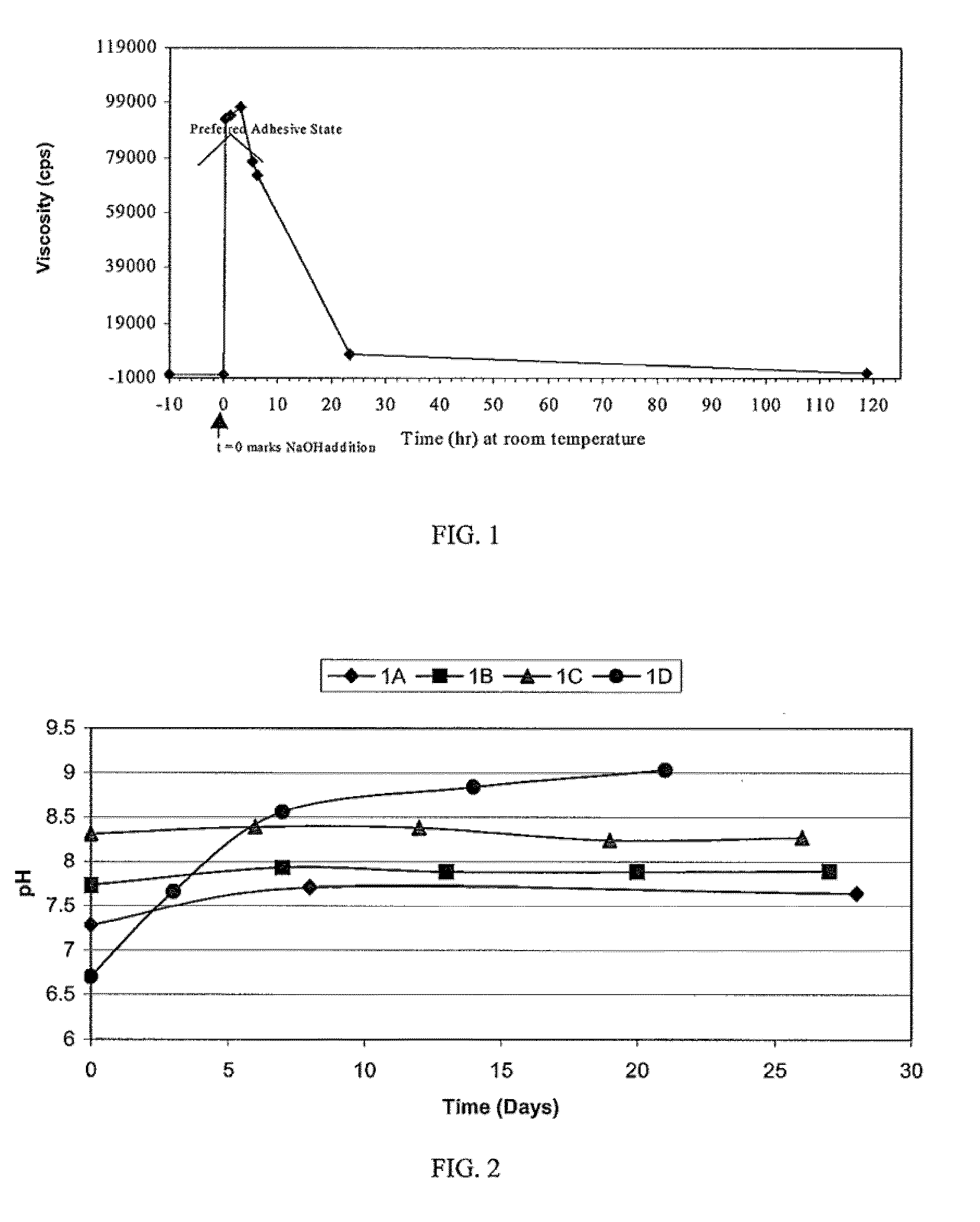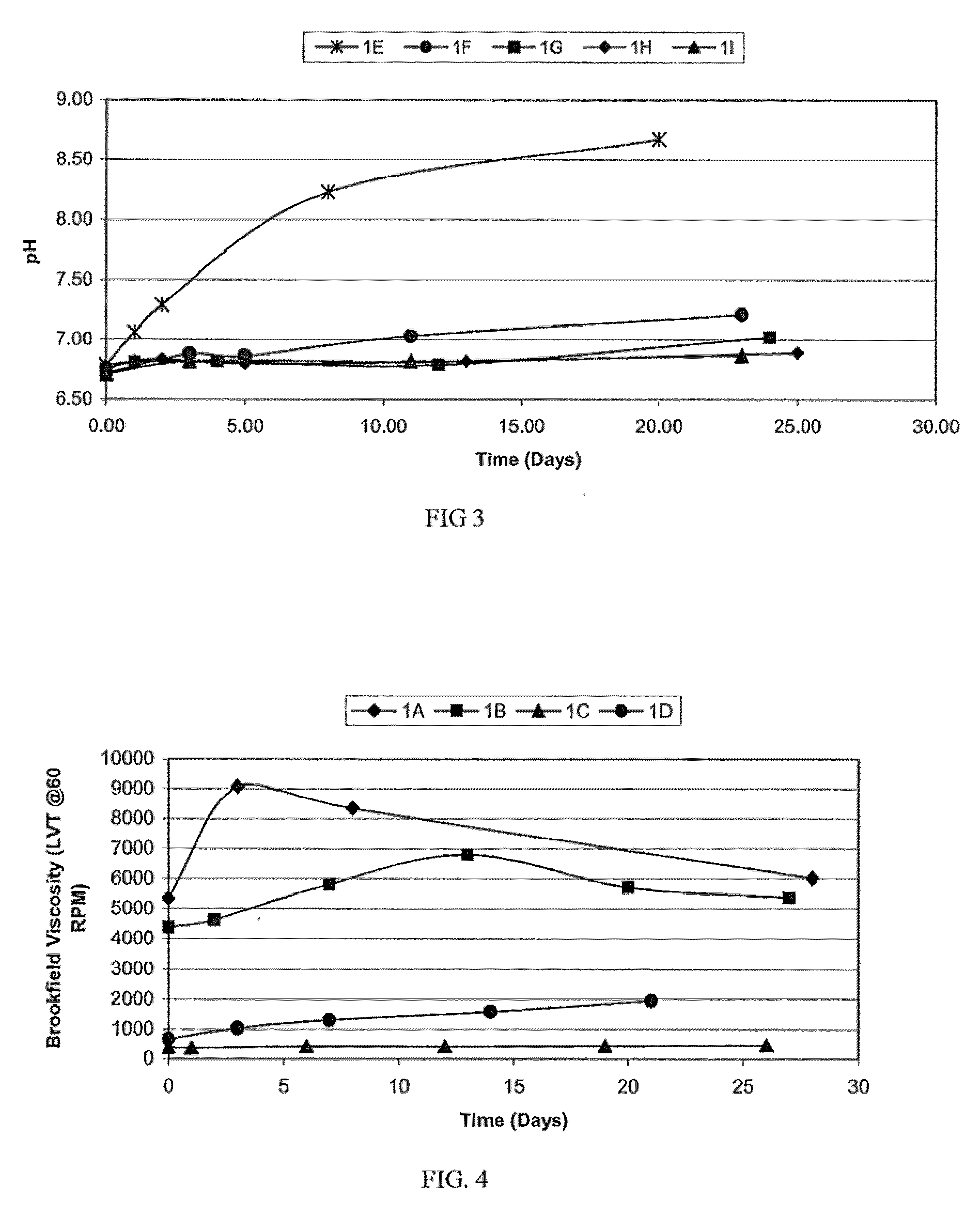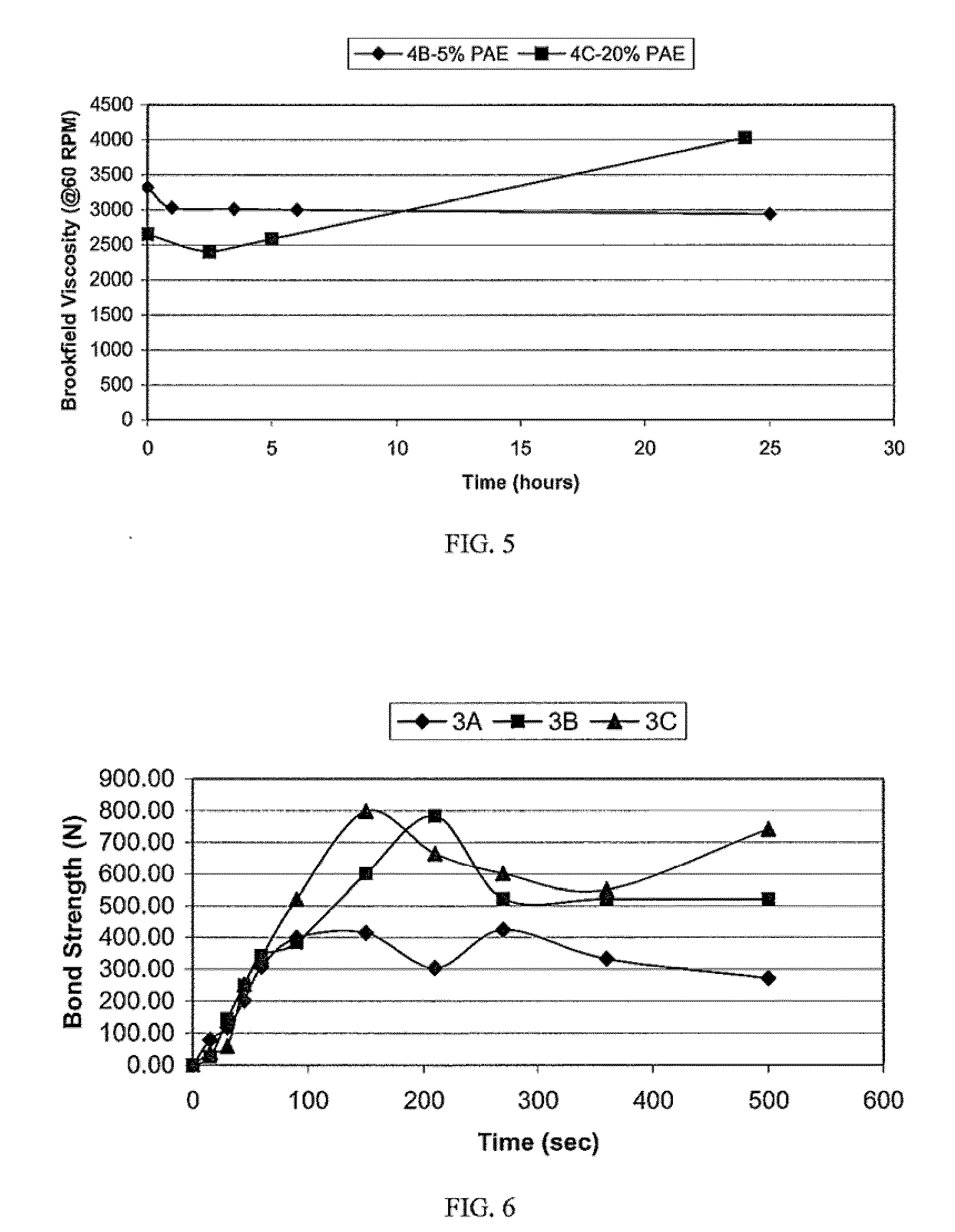Stable Soy/Urea Adhesives and Methods of Making Same
a technology of stable soy/urea and adhesives, which is applied in the direction of adhesive types, protein adhesives, protein coatings, etc., can solve the problems of limiting the use of interior applications of soybean adhesives in the prior art, reducing performance, and limited pot life of soybean adhesives, so as to improve stability, improve performance, and reduce cost
- Summary
- Abstract
- Description
- Claims
- Application Information
AI Technical Summary
Benefits of technology
Problems solved by technology
Method used
Image
Examples
example 1
Methods of Preparing Soy / Urea Adhesives
[0100]Soy flour was heat-denatured and then reacted with urea to produce stable soy / urea aqueous products.
[0101]Preparation Procedure: (1A-1D): Water was charged into a three-neck round bottom flask equipped with a heating mantle, temperature controller, reflux condenser and mechanical stirrer. The soy flour was added to the water at room temperature over a period of two to five minutes. The mixture was stirred for five minutes to homogeneity and then heated to 90° C. denaturing temperature over fifteen to thirty minutes. The reaction was held at the set temperature + / −0.5° C. for one hour with stirring at which time the urea was added to the heat denatured soy and held for an additional hour at the set point. The reaction was cooled to 25° C. on ice / water bath and stored for use in plastic bottles at room temperature. Sample 1D was identical to 1B except a lower PDI soy (CG4) was used and the temperature was reduced from 90° C. to 50° C.
[0102]...
example 2
ve Examples
[0106]Some recent work has demonstrated the known dry and wet adhesive strengths from non-crosslinked soy protein isolates. Comparing these adhesives to the adhesives of the present invention demonstrate the improvements that can be realized with a low cost, high carbohydrate containing soy flour.
[0107]Example 2A is a low temperature urea-denatured product prepared according to Sun U.S. Pat. No. 6,497,760 except that 23.9% solids were used instead of 14.0%. Additionally, Sun's product was freeze-dried and the present product was used immediately.
[0108]Preparation Procedure: Water and urea were charged to a three-neck round bottom flask equipped with a heating mantle, temperature controller, reflux condenser and mechanical stirrer. The solution was heated to 25° C. at which time the SPI was added over a fifteen min. period. The mixture was maintained at 25±2° C. for one hour with stirring. The reaction product was then stored for use at room temperature.
TABLE 5Formula for ...
examples 3 to 5
[0112]Soy Flour / Urea with PAE: Although the soy flour / urea adhesives can be used as a stand-alone adhesive, the water resistance is limited. A crosslinking agent may be added to provide additional protection against water swelling and, thus, enhancing the wet strength. The crosslinking agent introduces additional crosslink density into the products.
[0113]Examples 3-5 demonstrate the crosslinking ability of a typical PAE resin with a 1 / 1 soy flour / urea product (similar to example 1B). Initial soy flour / urea pH levels of 4.5, 7.0 and 10.0 were selected to determine the pH effects on both final performance and neat product characteristics. PAE levels of 0%, 5% and 20% (s / s) were evaluated for stability and performance.
PUM
| Property | Measurement | Unit |
|---|---|---|
| Temperature | aaaaa | aaaaa |
| Temperature | aaaaa | aaaaa |
| Fraction | aaaaa | aaaaa |
Abstract
Description
Claims
Application Information
 Login to View More
Login to View More - R&D
- Intellectual Property
- Life Sciences
- Materials
- Tech Scout
- Unparalleled Data Quality
- Higher Quality Content
- 60% Fewer Hallucinations
Browse by: Latest US Patents, China's latest patents, Technical Efficacy Thesaurus, Application Domain, Technology Topic, Popular Technical Reports.
© 2025 PatSnap. All rights reserved.Legal|Privacy policy|Modern Slavery Act Transparency Statement|Sitemap|About US| Contact US: help@patsnap.com



